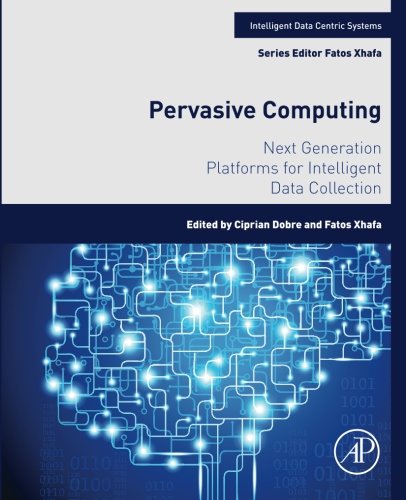

Most ebook files are in PDF format, so you can easily read them using various software such as Foxit Reader or directly on the Google Chrome browser.
Some ebook files are released by publishers in other formats such as .awz, .mobi, .epub, .fb2, etc. You may need to install specific software to read these formats on mobile/PC, such as Calibre.
Please read the tutorial at this link: https://ebookbell.com/faq
We offer FREE conversion to the popular formats you request; however, this may take some time. Therefore, right after payment, please email us, and we will try to provide the service as quickly as possible.
For some exceptional file formats or broken links (if any), please refrain from opening any disputes. Instead, email us first, and we will try to assist within a maximum of 6 hours.
EbookBell Team

4.8
44 reviewsPervasive Computing: Next Generation Platforms for Intelligent Data Collection presents current advances and state-of-the-art work on methods, techniques, and algorithms designed to support pervasive collection of data under ubiquitous networks of devices able to intelligently collaborate towards common goals.
Using numerous illustrative examples and following both theoretical and practical results the authors discuss: a coherent and realistic image of today’s architectures, techniques, protocols, components, orchestration, choreography, and developments related to pervasive computing components for intelligently collecting data, resource, and data management issues; the importance of data security and privacy in the era of big data; the benefits of pervasive computing and the development process for scientific and commercial applications and platforms to support them in this field.
Pervasive computing has developed technology that allows sensing, computing, and wireless communication to be embedded in everyday objects, from cell phones to running shoes, enabling a range of context-aware applications. Pervasive computing is supported by technology able to acquire and make use of the ubiquitous data sensed or produced by many sensors blended into our environment, designed to make available a wide range of new context-aware applications and systems. While such applications and systems are useful, the time has come to develop the next generation of pervasive computing systems. Future systems will be data oriented and need to support quality data, in terms of accuracy, latency and availability.
Pervasive Computing is intended as a platform for the dissemination of research efforts and presentation of advances in the pervasive computing area, and constitutes a flagship driver towards presenting and supporting advanced research in this area.